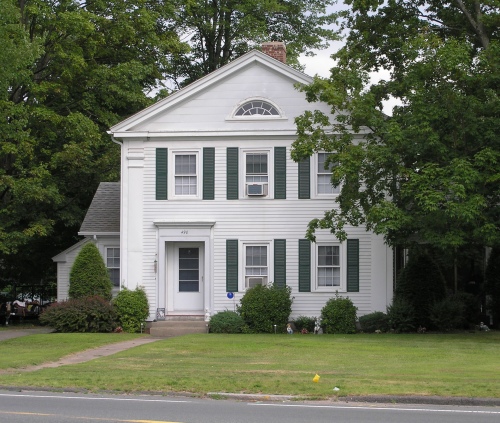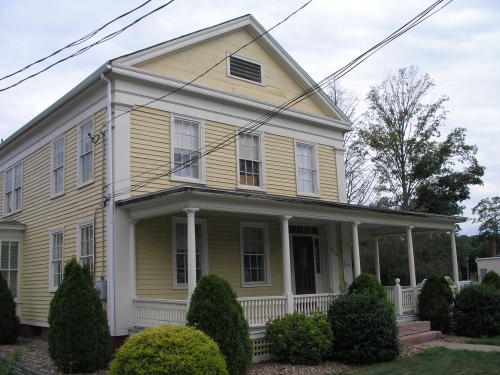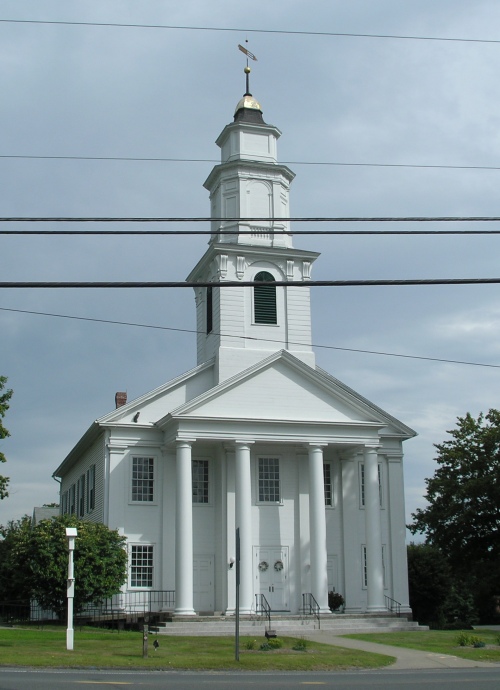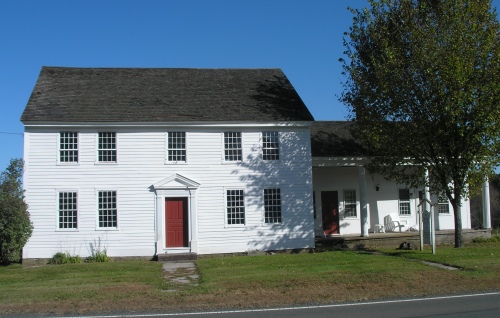Southwick Congregational Church Parsonage (1948)

At 490 College Highway in Southwick is the parsonage of the Southwick Congregational Church. It was built in 1948 in a Greek Revival style that complements that of the 1824 church.

At 490 College Highway in Southwick is the parsonage of the Southwick Congregational Church. It was built in 1948 in a Greek Revival style that complements that of the 1824 church.

At 476 College Highway, near the intersection with Depot Street in Southwick, is a Greek Revival-style house, built around 1840. In the later nineteenth century it was owned by Cooley Anson Griffin, who married Effie J. Doherty in 1892. In the twentieth century, their son, Raymond George Griffin, lived in the Loomis J. Sackett House, next door, which was torn down after October 1942. Born in 1906, Raymond Griffin attended the Massachusetts Agricultural College (now UMASS), where he made his mark on the 1926 baseball and 1927 basketball teams.

The original meeting house in Southwick of 1773, located in Southwick‘s central village, burned in August 1823 and was replaced with the current meeting house, built in 1824-1825. A Federal/Greek Revival structure, the Southwick Congregational Church is considered to be one of the finest works of its architect, Isaac Damon of Northampton. According to George C. Gardener, writing in The American Architect and Building News (Vol. XLVII, No. 996, Jan. 26, 1895):
Capt. Isaac Damon appears to have been the leading architect of Western Massachusetts from 1812 to 1840, his influence on public and ecclesiastical work being even greater than [Asher] Benjamin’s on domestic. He designed and built at least thirteen churches in this region and nearly all the town-halls and court-houses; his specialty, however, was bridges, and there are several of his drawings still preserved
As the church neared completion, on November 6, 1824, two letters signed by the men working on the church were placed in a box inside one of the columns. These were rediscovered during a restoration in 1950 (see pdf article) and reveal that the workers came, not from Southwick, but from many other towns in the region.

The Joseph Moore House is located in an area known as the Southwick Jog, a section of the town of Southwick that extends further south than the rest of the state border with Connecticut. The house was built in 1751 by Joseph Moore and was lived in by his son, Roger Moore (1752-1838), for his entire life. Owing to the many boundary changes which led to the creation of the Southwick Jog (which is surrounded by Connecticut on three sides), Roger Moore lived in two states, three counties, and four towns, without ever moving! The house has been restored as a museum by the Southwick Historical Society.